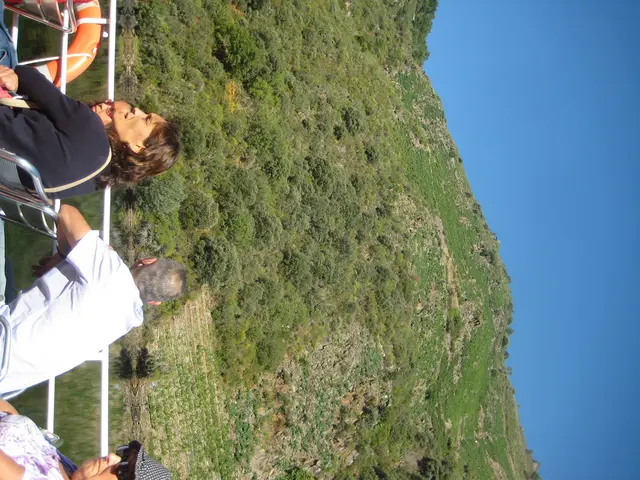"Everyone gather around!": Cherished culinary delights of the Altai Tatars
Tucking into Tatar Cuisine: A Journey Through Traditional Flavors
In the heart of the Altai region, you'll find around nine thousand Tatars proudly preserving their cultural identity—a community as vibrant and diverse as the food they prepare. Among Russians, Tatars rank as the second-largest ethnic group, with over 5.5 million residents calling Russia home.
Delving into the delightful dishes of Tatars, there's one that reigns supreme: echpochmak, the king of Tatar pastries. Its name means "triangle," and this meat pie is typically filled with beef or poultry, potatoes, and onions, sometimes cooked to perfection in a hot broth or served with noodles.
Another Tatar pastry to savor is eleş, a pie brimming with chicken and potatoes. Known for its warmth, this pie complements soups delightfully. The word "eleş" translates to "portion," perfectly encapsulating the hearty offerings of Tatar cuisine.
Tutyrma, a tantalizing homemade sausage made from lamb or beef, is mixed with rice or buckwheat, making it a favorite among both Tatars and Bashkirs.
Gubadiya, the main celebratory pie on a Tatar table, is often whipped up for weddings. This pie, which contains rice, eggs, raisins, and cottage cheese, is a staple at special occasions.
One cannot forget tokmach, a flavorful noodle soup popular across Russia. This hearty dish, prepared on a meat broth, uses easily accessible ingredients like chicken or beef.
"Tokmach gained prominence because it's incredibly hearty, perfect for colder seasons," explained Aalia Gizatullina. The preparation of this dish is based on Chinese culinary principles, which lends a unique twist to the dish.
Notable among Tatar desserts is chak-chak, an important symbol of their cultural heritage. With a golden hue and a lumpy texture, chak-chak represents the sun and the friendliness of the Tatar people. "At all our celebrations, chak-chak is like bread and salt for Orthodox people—it's always the first thing we offer to our guests," shared Aalia Gizatullina.
The Altai Tatars radiate warmth and hospitality, valuing tradition and wisdom. They are the epitome of straightforwardness, laughter, and hard work, fiercely remembering their roots. As you venture into the world of Tatar cuisine, prepare your palate for a journey that delves deep into their rich cultural and culinary history.
Here, we shed light on the origin stories of some Tatar dishes:
Echpochmak
The name "echpochmak" translates to "triangle" and is related to the Volga Tatars' triangular meat pie.
Eleş
Eleş, a traditional Tatar meat soup, is deeply rooted in the nomadic traditions of the Tatars, characterized by simplicity and nutrition.
Tutyrma
Tutyrma is a dish that shares similarities with Turkic stuffed dishes, involving the art of filling a vegetable or fruit with meat and spices.
Gubadiya
Gubadiya is a Tatar multi-layered pie that boasts a diverse range of fillings, reflecting the rich culinary diversity within Tatar cuisine.
Tokmach
Tokmach, a hearty and comforting Tatar soup, draws parallels to Central Asian and Turkic culinary traditions, symbolizing the exchange of ideas within the region.
Chak-chak
Chak-chak, a popular dessert at Tatar celebrations, represents good fortune and prosperity, with its golden hue and its lumpy texture resembling the sun and the hospitable spirit of the Tatar people.
These dishes underscore the Tatars' rich culinary heritage, which has been shaped by centuries of interaction with various cultures in the Volga-Ural region.
- The vibrant Tatars, second largest ethnic group in Russia, preserving their cultural identity, prepare dishes as diverse and captivating as themselves, such as echpochmak, the supreme Tatar pastry filled with beef or poultry.
- Known for its warmth and heartiness, eleş, another Tatar pastry, complements soups wonderfully and embodies the generosity of Tatar cuisine, translating to "portion".
- Tutyrma, a flavorful sausage, has been influential in both Tatar and Bashkir communities, made from lamb or beef, mixed with rice or buckwheat.
- Gubadiya, the celebratory pie at Tatar weddings, is a staple at special occasions, containing rice, eggs, raisins, and cottage cheese.
- Tokmach, a popular noodle soup across Russia, is based on Chinese culinary principles and provides warmth during colder seasons.
- Chak-chak, an important symbol of Tatar heritage, represents the sun and the friendliness of the Tatar people, often being the first offering to guests at celebrations.








